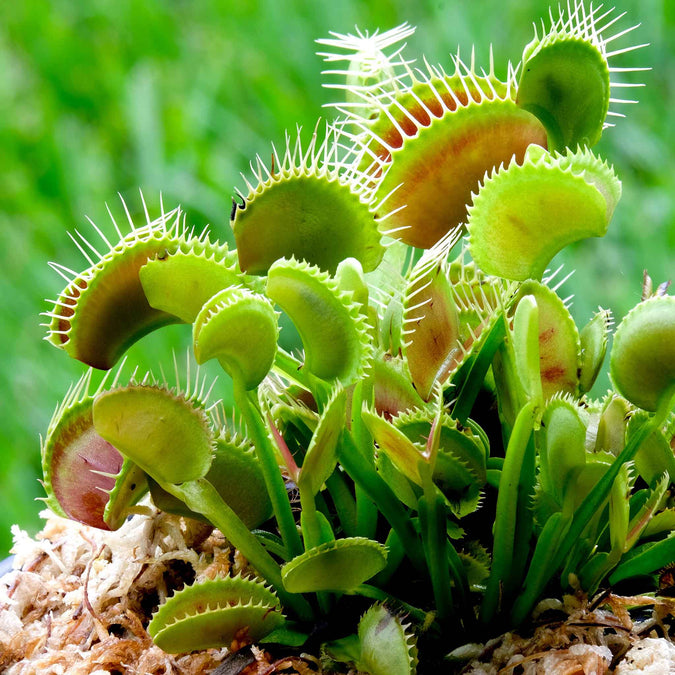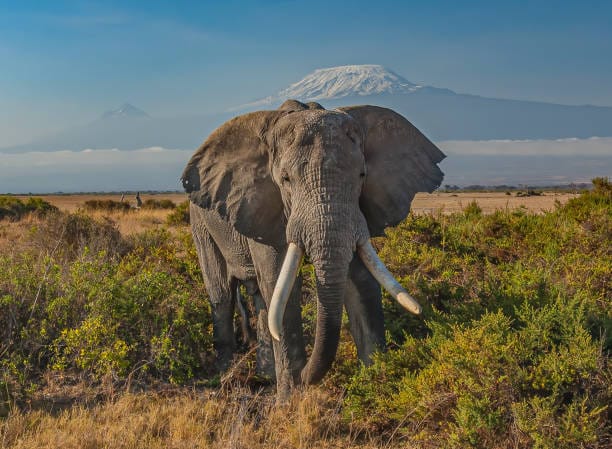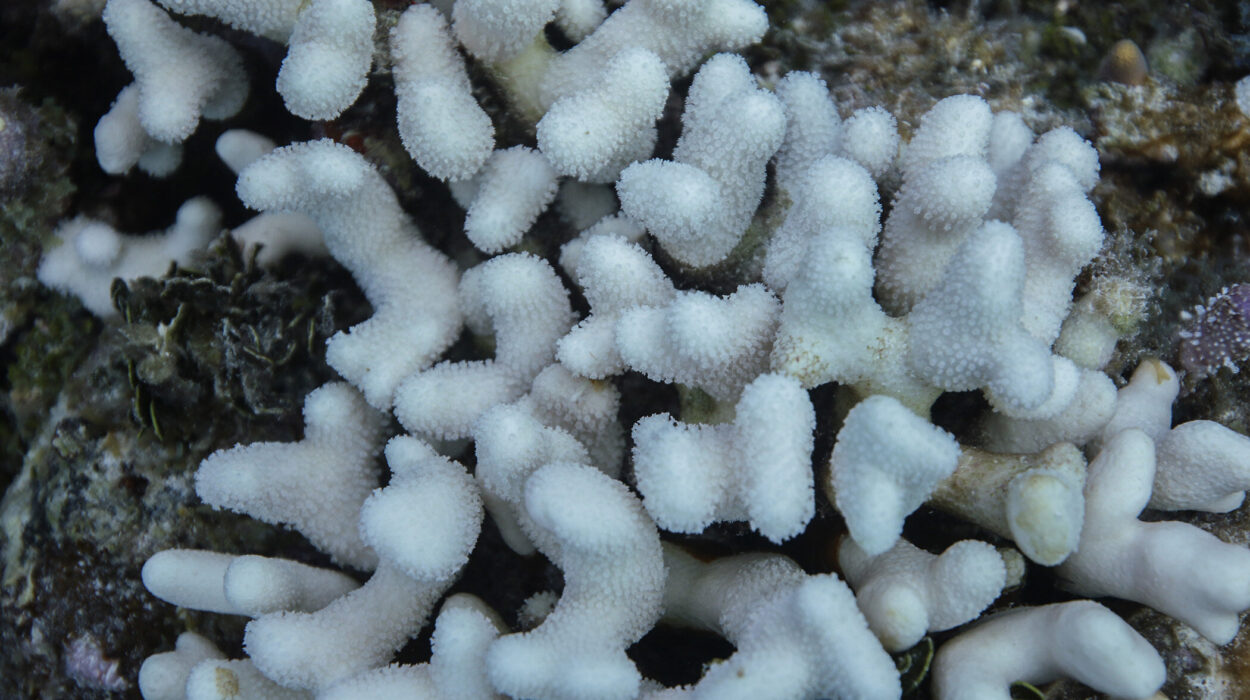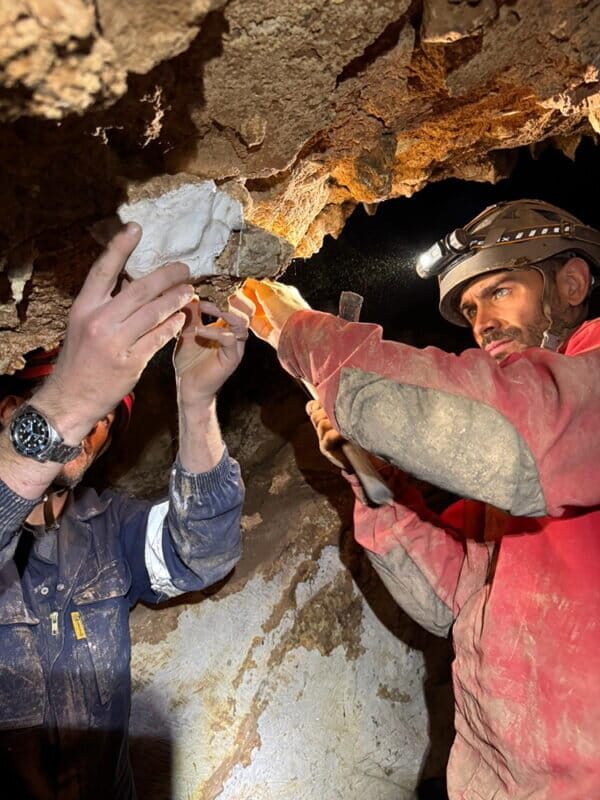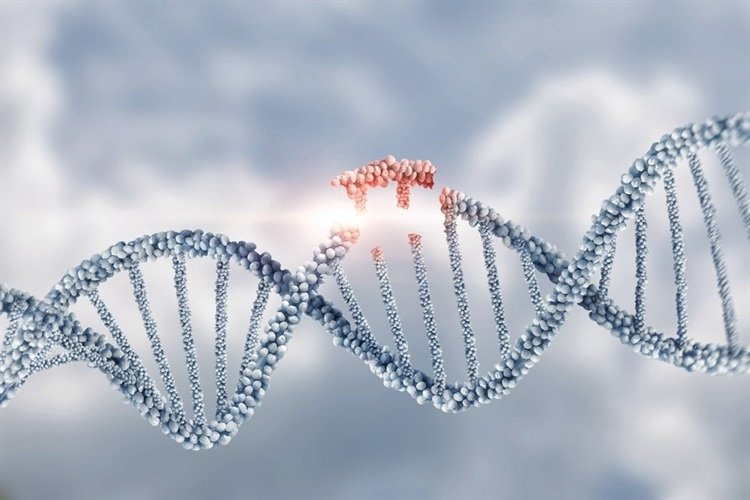Deep in the dripping rainforests of Borneo, in valleys shrouded with perpetual mist, sunlight pierces the emerald canopy in shafts like cathedral windows. Here, among twisted lianas and towering dipterocarp trees, dwell creatures of wonder: pygmy elephants, clouded leopards, giant stick insects as long as your forearm. But lurking amid this green cathedral are silent assassins—plants that have evolved a dark appetite for flesh.
They stand innocently beautiful, adorned with blooms in every shade of scarlet and gold. Yet within their elegant structures, they harbor deadly intentions. Some snap shut like a bear trap. Others transform leaves into slippery death slides. Some exude sweet nectar as bait, only to drown their victims in acidic pools. The forest hums with life, but it is also a place where death is sweetened by fragrance, where predators hide behind petals.
We call them carnivorous plants, and they have evolved one of the most startling survival strategies in nature: to eat meat.
This is the story of plants that hunt. Of botanical engineering so complex it can rival any animal predator. Of a hunger born in soil too poor to sustain ordinary life. And of a unique evolutionary arms race—between prey that learns to escape, and plants that learn to outwit.
The Soil of Desperation
To understand why a plant would turn killer, we must begin in the dirt. Or rather, in the lack of it. The soils where carnivorous plants thrive—peat bogs, tropical heath forests, rain-slicked mountaintops—are poor in nutrients, particularly nitrogen and phosphorus. These are essential for building proteins, nucleic acids, and all the molecules of life. In ordinary soil, plants get them via roots. But in a sun-drenched bog where rainfall leaches minerals away, or atop acidic peat beds, life is an endless starvation diet.
In such places, evolution began experimenting. Plants with sticky surfaces occasionally trapped insects. Over millions of years, structures evolved to digest these unfortunate victims, allowing the plants to extract nitrogen directly from flesh. What began as a fluke—a sticky leaf that snagged a passing bug—became an evolutionary advantage.
Today, there are over 800 known species of carnivorous plants worldwide, scattered across nearly twenty different plant families. They’ve evolved separately in places as distant as Southeast Asia, South America, and the temperate bogs of North America and Europe. They are one of nature’s clearest examples of convergent evolution: different lineages, same deadly trick.
They are not passive green beings sipping sunshine. They are predators.
The Venus Flytrap: Snap Decisions
Among all carnivorous plants, none captures the public imagination quite like the Venus flytrap. Native to a small patch of the Carolinas in the United States, it has become a botanical celebrity—sold in garden shops, featured in films, even worshipped in pop culture horror tropes.
Yet the real plant is stranger and more sophisticated than any fiction.
A mature flytrap grows leaves shaped like a pair of hinged jaws, fringed with interlocking spines. Each trap is a sophisticated sensor array. Inside the trap, tiny hairlike projections called trigger hairs wait for contact. One brush from an insect is not enough. It must touch at least two hairs in quick succession—or the same hair twice—within about twenty seconds.
This is no accident. It’s a sophisticated filter to avoid false alarms from raindrops or debris. Only genuine prey triggers the rapid closure.
When a suitable victim blunders in—a fly, spider, or ant—the trap snaps shut in as little as 0.1 seconds, one of the fastest movements in the plant kingdom. At first, the trap closes loosely, allowing smaller prey to escape. The plant seems to “choose” which victims are worth digesting. If the creature is large enough and continues struggling, the trap seals tighter, forming an airtight chamber.
Then comes digestion. Glands on the trap’s inner surface begin secreting digestive enzymes, breaking down soft tissues into a nutrient-rich soup. After five to twelve days, depending on prey size, the trap reopens, revealing nothing but an empty exoskeleton.
The Venus flytrap’s astonishing rapid movement relies on changes in turgor pressure within cells—an electrochemical process akin to the way nerve impulses fire in animals. Indeed, electrical signals, called action potentials, zip along the plant’s tissues when the trigger hairs are touched. In evolutionary terms, it’s an extraordinary convergence toward the signaling systems of animal nervous tissue—despite plants lacking nerves altogether.
Pitcher Plants: The Deadly Chalice
While the Venus flytrap grabs the headlines, perhaps the most architecturally spectacular carnivorous plants are the pitcher plants. They build elaborate death traps shaped like vases, goblets, or Gothic chalices, filled with digestive fluid.
Among pitcher plants, none are quite so theatrical as those in the genus Nepenthes. These tropical marvels grow across Southeast Asia, Madagascar, and parts of Australia. Their traps can be as small as thimbles—or as large as footballs.
A pitcher begins as a coiled tendril at the end of a leaf. Slowly it swells into a hollow vessel, with a lid perched above. The inner walls of the pitcher are often waxy and slick, impossible for insects to climb. Around the rim, or “peristome,” the plant exudes sweet nectar—a seductive invitation to any wandering ant, beetle, or fly.
As the insect explores, it steps onto the curved rim. Often, the peristome is wet and hyper-smooth, turning into a botanical slip-and-slide. Down tumbles the victim, into the liquid below.
Inside the pitcher waits a pool of digestive fluid. In some species, it’s watery; in others, it’s viscous, almost mucilaginous. This pool contains enzymes like nepenthesin, proteases, and chitinases, which break down proteins and exoskeletons. Prey drowns quickly—sometimes suffocating before digestion even begins.
Nepenthes have evolved astonishing variations in these deadly containers. Some pitchers smell like rotting meat, attracting carrion flies. Some mimic the look of flowers. Others, like Nepenthes rajah of Borneo, are so large that rats, birds, and even small mammals have been found drowned inside. Though these vertebrates are not primary prey, they sometimes fall in by accident, providing a nutrient bonanza for the plant.
There’s another marvel hidden in these traps. The fluid within is sometimes “viscoelastic,” behaving both as a liquid and as a sticky glue. Researchers have discovered that even strong insects cannot escape once immersed. The physics is devilish: the faster the insect thrashes, the more resistance it feels from the fluid. Struggle only hastens doom.
Bats, Toilets, and Strange Partnerships
The story of Nepenthes takes an even stranger turn with recent discoveries of symbiotic relationships between pitcher plants and animals. Certain Bornean species, like Nepenthes hemsleyana, have evolved pitchers that act as bat roosts. The woolly bat (Kerivoula hardwickii) crawls inside these elongated pitchers during the day, hanging upside-down in safety. The plant gains nutrients not from eating the bat—but from collecting its droppings.
It’s a trade: shelter for fertilizer. Studies show that plants occupied by bats grow significantly larger and healthier than those that rely solely on insect prey.
Equally odd are species that serve as “toilets” for tree shrews. Some Nepenthes species produce sugary nectar on the lid and rim of their giant pitchers. Tree shrews climb onto the pitcher to feed, squatting over the opening. As they lick up nectar, they defecate into the trap. For the plant, this is an efficient nitrogen source without the mess of struggling insect prey.
Carnivory has become not merely a feeding strategy but a complex ecological partnership. In these plants, evolution has turned architecture into a business plan.
Sundews and Butterworts: The Sticky Assassins
Elsewhere in the carnivorous world, sticky-leaved plants wage a slower but equally lethal war. Sundews, belonging to the genus Drosera, grow across every continent except Antarctica. They look like botanical sea anemones: each leaf bristles with tentacles tipped in sparkling droplets. To the casual observer, these droplets resemble dew—hence the name. In truth, they are glistening beads of mucilage, sticky and deadly.
An insect lured by scent or reflected light lands upon the leaf and becomes glued in place. The tentacles then bend inward in a slow-motion embrace, pressing the victim against the leaf surface. Glands begin secreting enzymes to dissolve the prey’s soft tissues.
Charles Darwin, ever the careful observer, was fascinated by sundews. In his 1875 book, Insectivorous Plants, he documented their movements and feeding behavior in meticulous detail. He dripped milk, egg white, even bits of raw meat onto their leaves, observing how they responded. His conclusion was bold for the time: sundews possessed senses and reactions shockingly animal-like.
Butterworts, meanwhile, lie in wait with flat, greasy leaves. Their surfaces are coated with tiny glands producing sticky secretions. Flying insects land to investigate the sweet-smelling surface—and find themselves unable to escape. The leaves slowly curl inward to trap the victim against digestive glands. Once feeding is complete, the leaf unfurls, revealing only an insect husk.
Though less flamboyant than flytraps or pitchers, sticky-leaf carnivores are masters of patience and subtlety.
Bladderworts: Underwater Ambush
Among the most astonishing carnivorous plants are the bladderworts (Utricularia), which thrive in water or soggy soils. Lacking true roots, these plants float freely, anchored by feathery underwater leaves. Hidden among these leaves are tiny traps shaped like miniature bladders.
Each bladder is a marvel of evolutionary engineering. It maintains a partial vacuum inside, sealed by a trapdoor. Along the door’s edge grow trigger hairs. When a small aquatic creature—a water flea, mosquito larva, or protozoan—brushes against them, the trapdoor flies open in less than a millisecond. Water rushes in, sucking the prey inside. The door slams shut again, and digestive enzymes dissolve the victim.
The entire capture happens so quickly that it’s invisible to the naked eye. Scientists have filmed it with high-speed cameras to reveal the mechanics. It’s one of the fastest movements known in the plant kingdom, rivaling even animal reflexes.
Some bladderwort species are only millimeters tall. Yet they can consume entire microscopic food webs beneath the surface of a pond.
The Price of Carnivory
Being a carnivorous plant comes at a cost. Building traps, producing digestive enzymes, constructing elaborate leaves—all require energy. Many carnivorous plants are slow-growing and produce fewer flowers and seeds than ordinary plants.
Moreover, the environments where they thrive are often harsh: acidic bogs, high-altitude cloud forests, wet savannas that burn each dry season. In these fragile habitats, carnivorous plants face threats from drainage, mining, logging, and climate change. Some species, like the giant Nepenthes of Borneo, are critically endangered, clinging to survival on a handful of isolated mountains.
Conservationists warn that without protection, many of these remarkable species could vanish within decades. In losing them, we’d lose not merely exotic curiosities, but crucial pieces of biodiversity—and a living record of evolutionary ingenuity.
Into the Future: The Science of Carnivory
Scientists continue to probe the mysteries of carnivorous plants, asking how such sophisticated mechanisms evolved. Genetic studies reveal that carnivorous traits arose multiple times in plant history. Many of the same genes used for defending against pathogens were co-opted for digestion. Evolution repurposed old tools for a deadly new task.
Researchers are also exploring carnivorous plants for practical uses. Some produce enzymes with unique properties that could be useful in medicine or biotechnology. Others are studied for their ecological roles in controlling insect populations or recycling nutrients in poor soils.
Meanwhile, new species keep turning up. In 2022, botanists described Nepenthes pudica from Borneo—a pitcher plant that keeps its traps underground, catching subterranean prey. Even after centuries of fascination, the world of carnivorous plants is not done surprising us.
A Green Predatory Marvel
Perhaps the true wonder of carnivorous plants lies not simply in their capacity to kill, but in how they bridge two kingdoms of life. They are rooted in the soil, drinking sunlight. Yet they behave, in many ways, like animals—sensing touch, responding rapidly, building structures designed to lure, capture, and devour.
They force us to reconsider where the boundaries lie between plant and animal, between passive existence and active pursuit. When we look into the mouth of a Nepenthes pitcher, or watch the trap of a Venus flytrap snap shut, we glimpse evolution’s power to invent solutions stranger than any fantasy.
In their quiet, deadly beauty, carnivorous plants remind us that even in the stillness of a bog or the hush of a rainforest, nature is a ceaseless theater of predation and survival. And sometimes, the predator waiting in the shadows is a plant.
